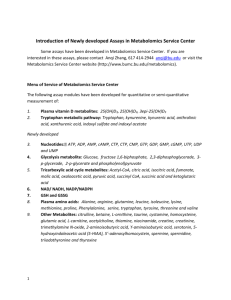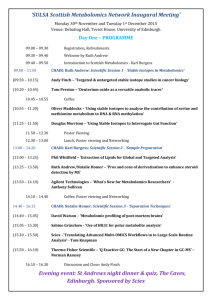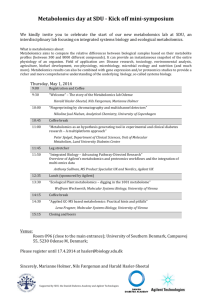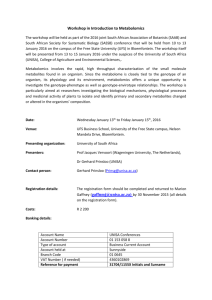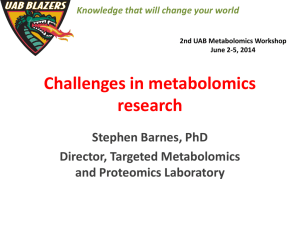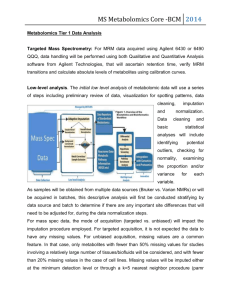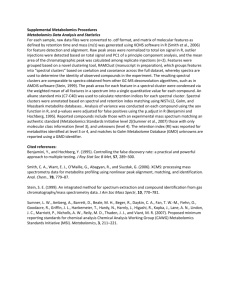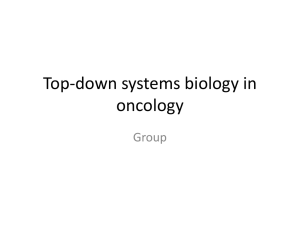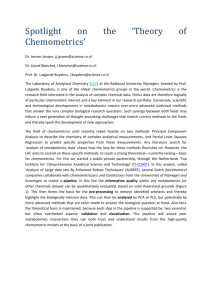Interview Ian
advertisement
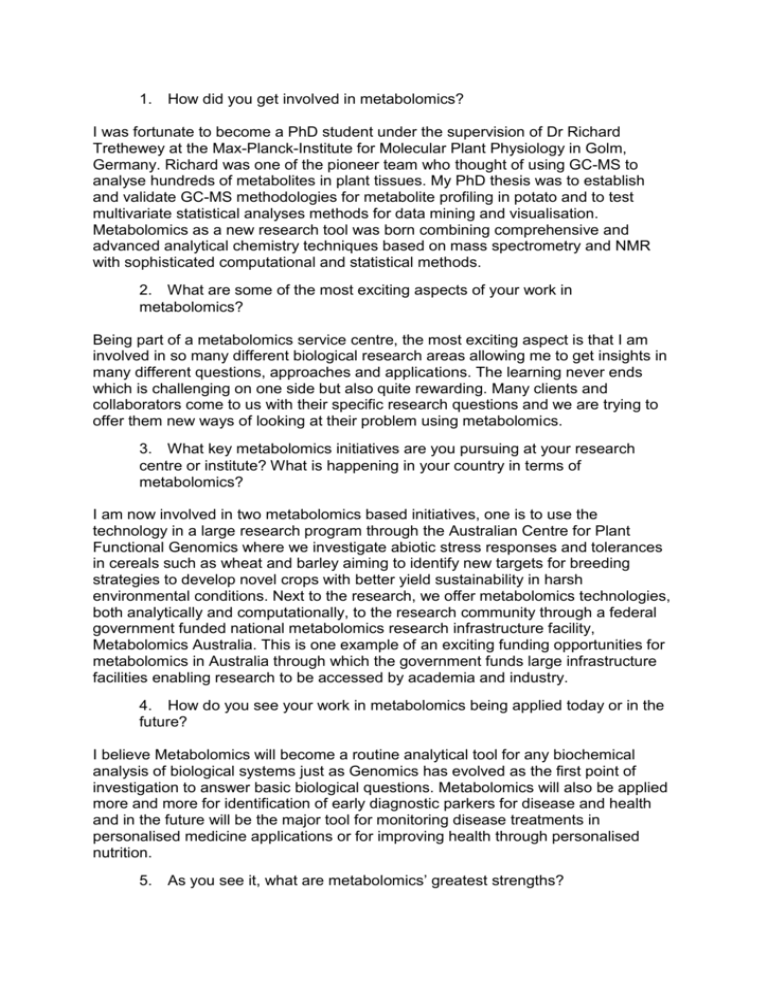
1. How did you get involved in metabolomics? I was fortunate to become a PhD student under the supervision of Dr Richard Trethewey at the Max-Planck-Institute for Molecular Plant Physiology in Golm, Germany. Richard was one of the pioneer team who thought of using GC-MS to analyse hundreds of metabolites in plant tissues. My PhD thesis was to establish and validate GC-MS methodologies for metabolite profiling in potato and to test multivariate statistical analyses methods for data mining and visualisation. Metabolomics as a new research tool was born combining comprehensive and advanced analytical chemistry techniques based on mass spectrometry and NMR with sophisticated computational and statistical methods. 2. What are some of the most exciting aspects of your work in metabolomics? Being part of a metabolomics service centre, the most exciting aspect is that I am involved in so many different biological research areas allowing me to get insights in many different questions, approaches and applications. The learning never ends which is challenging on one side but also quite rewarding. Many clients and collaborators come to us with their specific research questions and we are trying to offer them new ways of looking at their problem using metabolomics. 3. What key metabolomics initiatives are you pursuing at your research centre or institute? What is happening in your country in terms of metabolomics? I am now involved in two metabolomics based initiatives, one is to use the technology in a large research program through the Australian Centre for Plant Functional Genomics where we investigate abiotic stress responses and tolerances in cereals such as wheat and barley aiming to identify new targets for breeding strategies to develop novel crops with better yield sustainability in harsh environmental conditions. Next to the research, we offer metabolomics technologies, both analytically and computationally, to the research community through a federal government funded national metabolomics research infrastructure facility, Metabolomics Australia. This is one example of an exciting funding opportunities for metabolomics in Australia through which the government funds large infrastructure facilities enabling research to be accessed by academia and industry. 4. How do you see your work in metabolomics being applied today or in the future? I believe Metabolomics will become a routine analytical tool for any biochemical analysis of biological systems just as Genomics has evolved as the first point of investigation to answer basic biological questions. Metabolomics will also be applied more and more for identification of early diagnostic parkers for disease and health and in the future will be the major tool for monitoring disease treatments in personalised medicine applications or for improving health through personalised nutrition. 5. As you see it, what are metabolomics’ greatest strengths? That it is comprehensive. Biochemical analyses have been done for many decades however metabolomics technologies offer to analyse more than just a handful of metabolites. Although we still only know a low percentage of what we are able to measure with respect to chemical nature; we soon will increase the number of identifications in any analytical experiments definitely enriching the information obtained from metabolomics experiments. 6. What do you see as the greatest barriers for metabolomics? What improvements, technological or otherwise, need to take place for metabolomics to really take off? As mentioned above, we only can identify a low percentage of compounds in the metabolite profiles which is a major bottleneck when it comes to biological interpretation or validation of a potential biomarker. To really unlock the potential of metabolomics in biology, nutrition and medicine, a large improvement in compound identification needs to be made. This would require better libraries which are shared on public forums. The usefulness of these libraries also will improve once many laboratories use standardised methodologies across the globe. 7. How does the future look in terms of funding for metabolomics? In our region metabolomics has become an important budget item on grant applications where researchers request appropriate funding for experimentations, either in their own lab or through access to metabolomics service providers. The systems biology or integrated biology approach will become routine for any project aiming to increase our understanding of biological systems, health and complex diseases in human, animal and plants. Funding agencies now understand better that metabolomics is an essential tool for true systems biology and therefore funding will become more readily available to apply the technology. 8. What role can metabolomics standards play? Standards are playing a huge role. As mentioned above, in order to develop comprehensive metabolomics libraries researchers will need to settle on common and standardised methodologies which can be described in details through standards. This will also allow better comparisons of metabolomics results between laboratories, so well established standards and policies on minimal requirements to describe any metabolomics experiment will lead to huge improvements of possible interpretations within a biological context. 9. Do you have any other comments that you wish to share about metabolomics? I would like to emphasise how important it is for everyone starting to use or already using metabolomics to make sure to be aware of all the pitfalls and analytical mystics of dealing with extreme complex chemical mixtures. It is very easy to measure lots of noise and background which can interfere and skew resulting data and lead to misinterpretations. Any metabolomics experiment should be repeated a second time from the beginning, not only analyse the samples again. If the identified significant features/markers arise a second time, more conventional and rigorous validation methods need to be employed before a result can be considered true.
